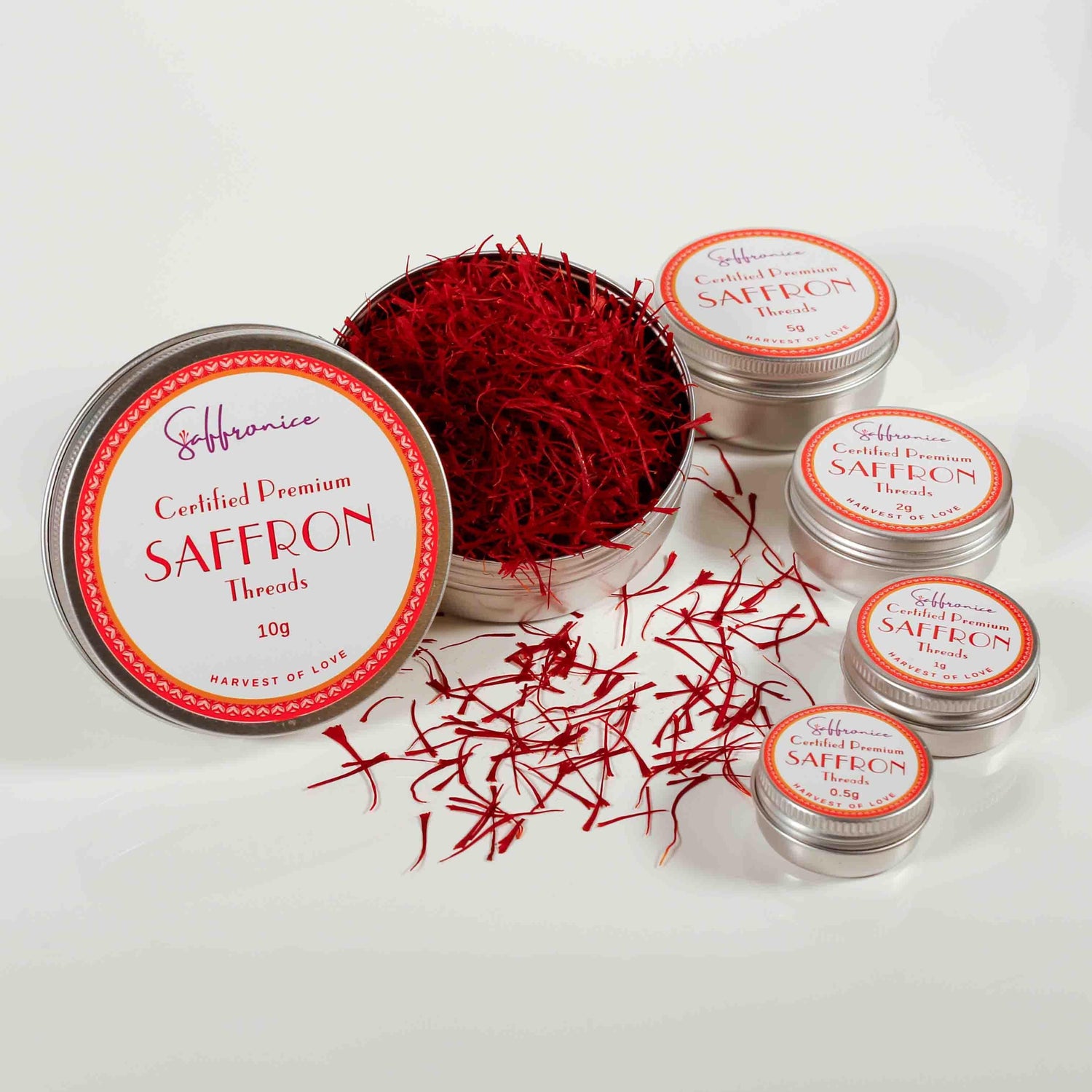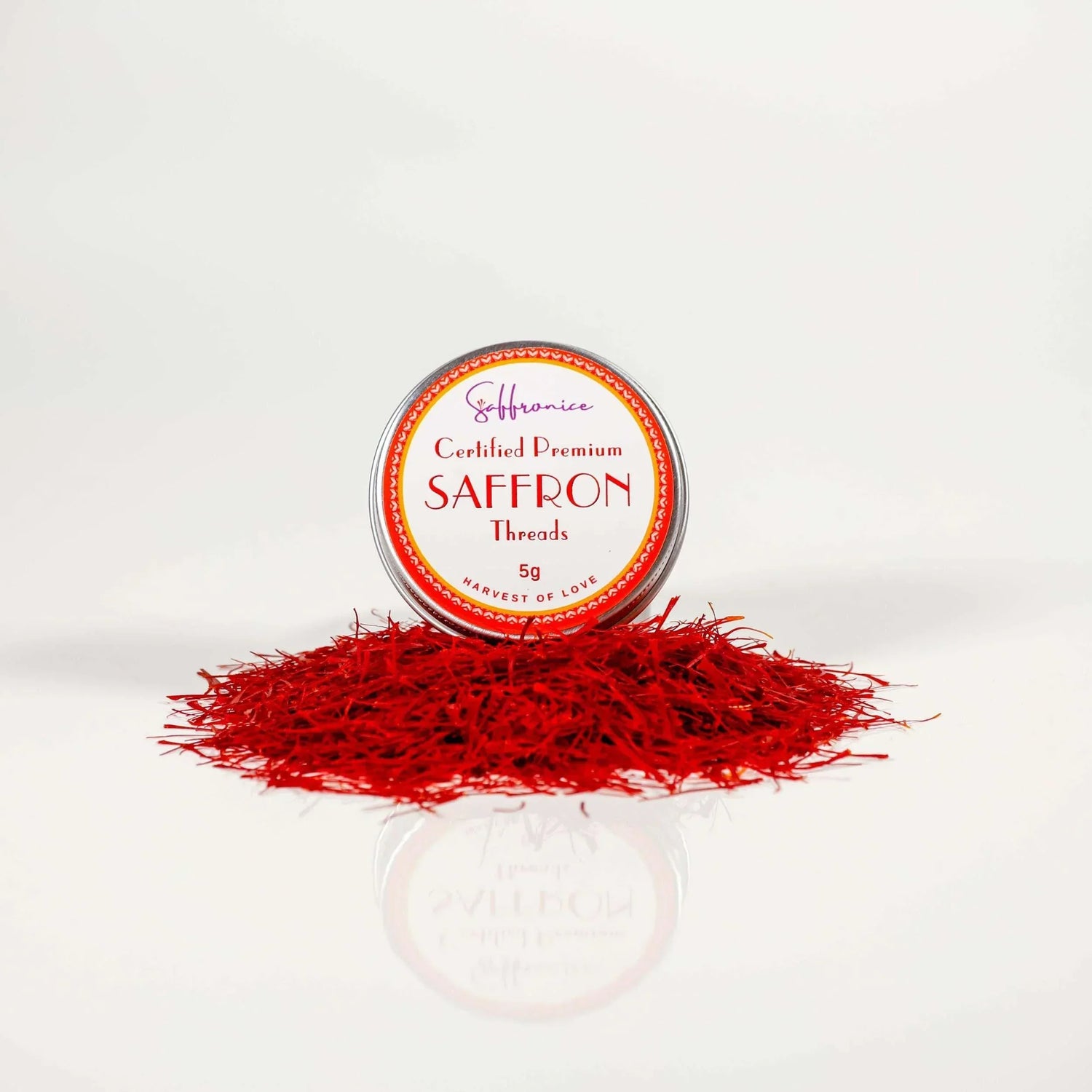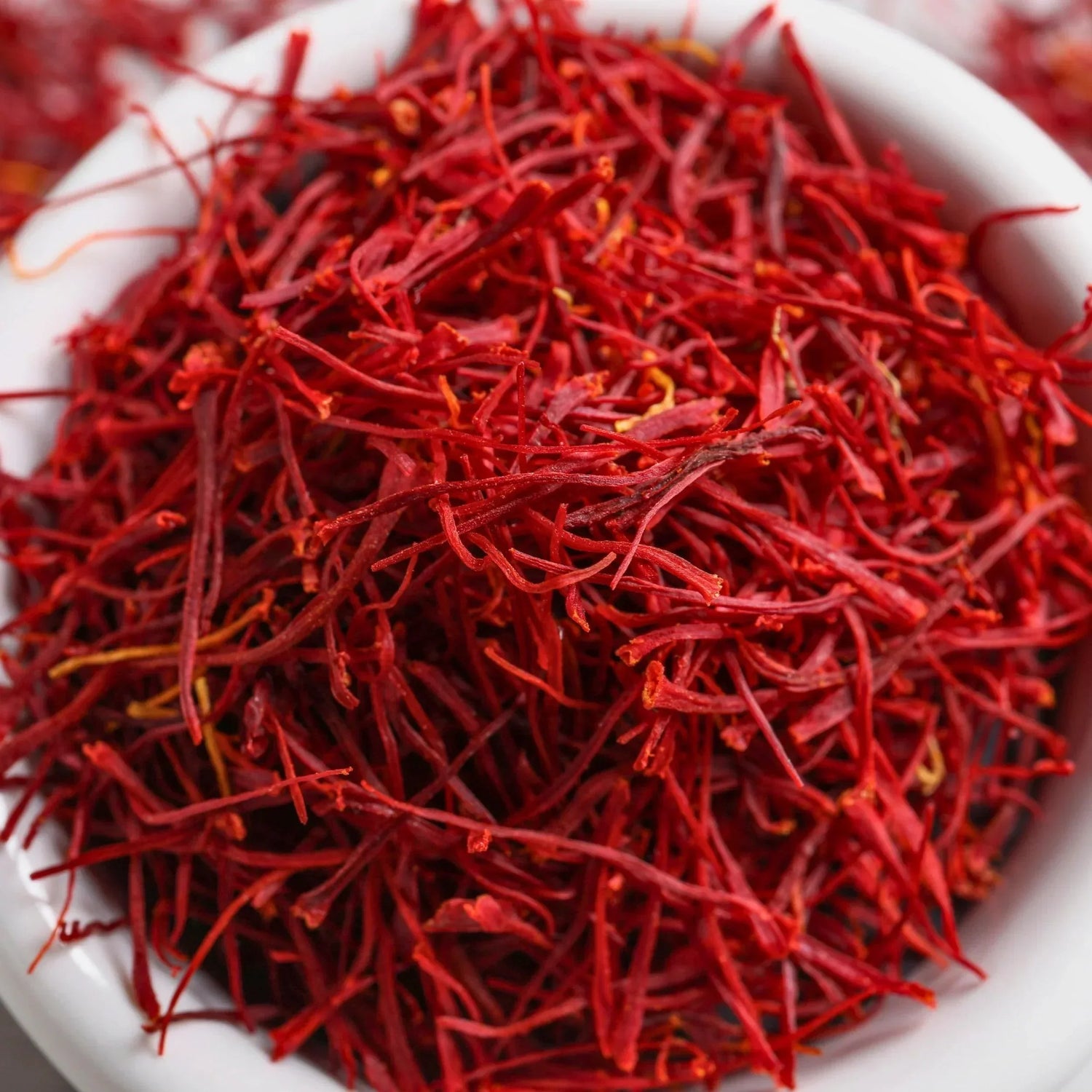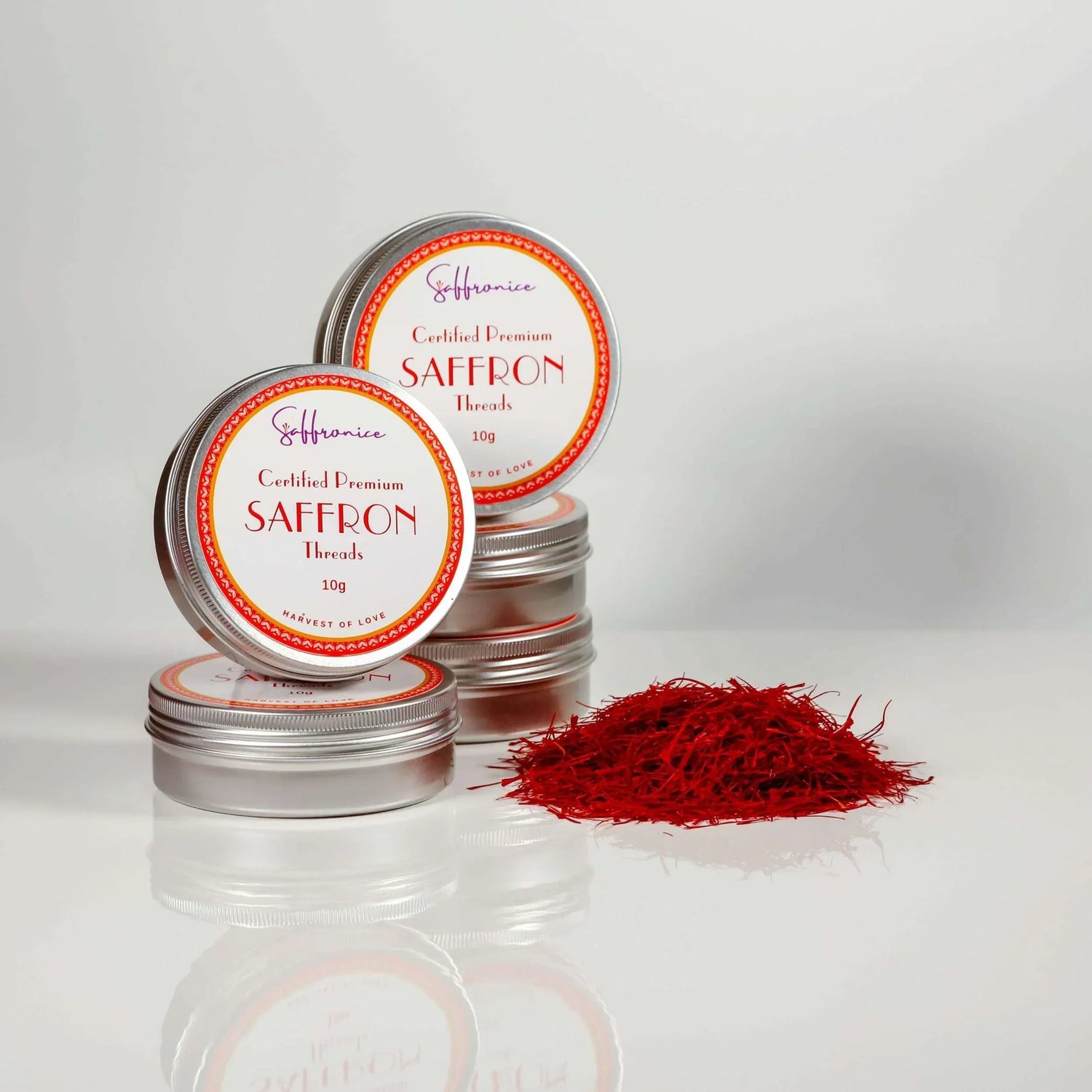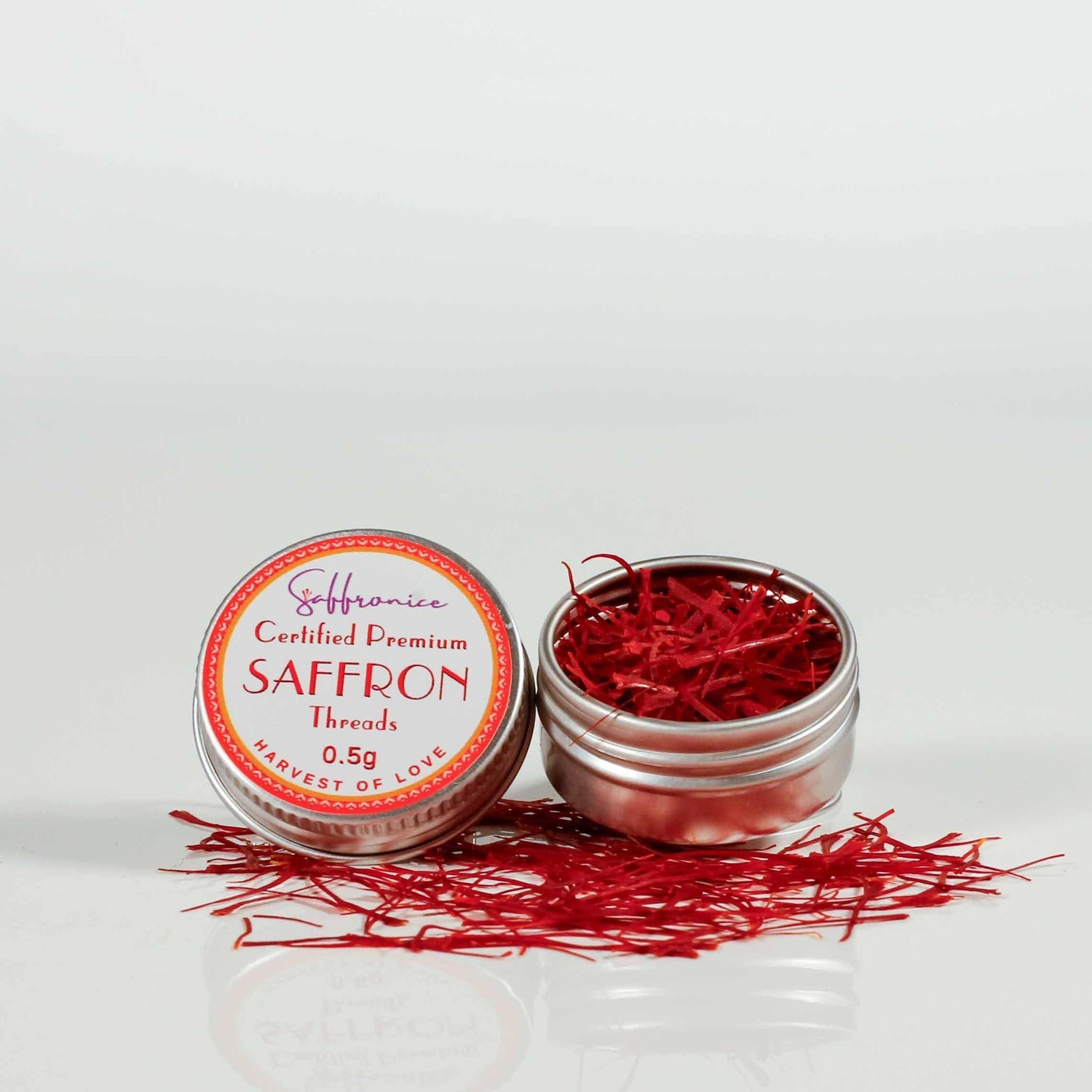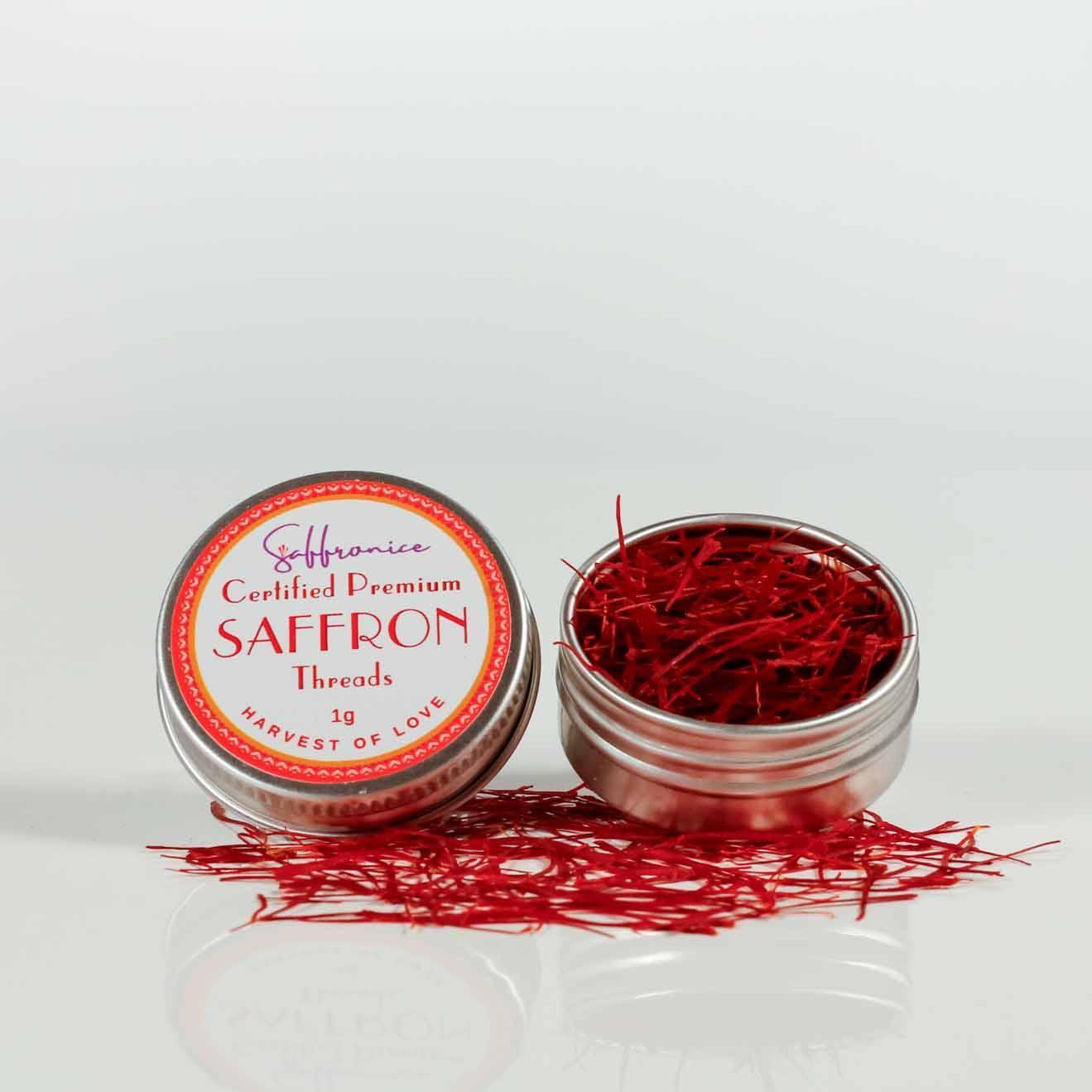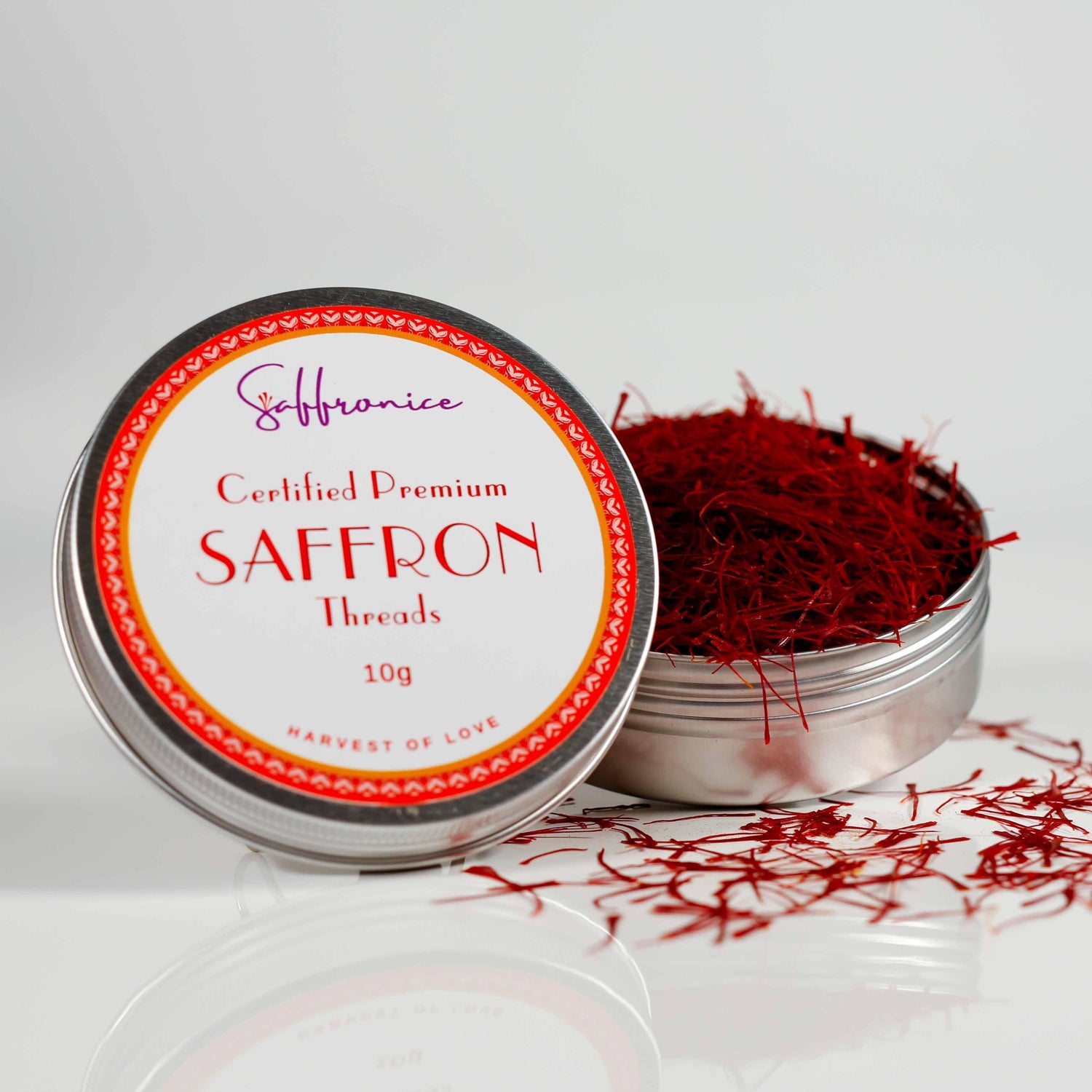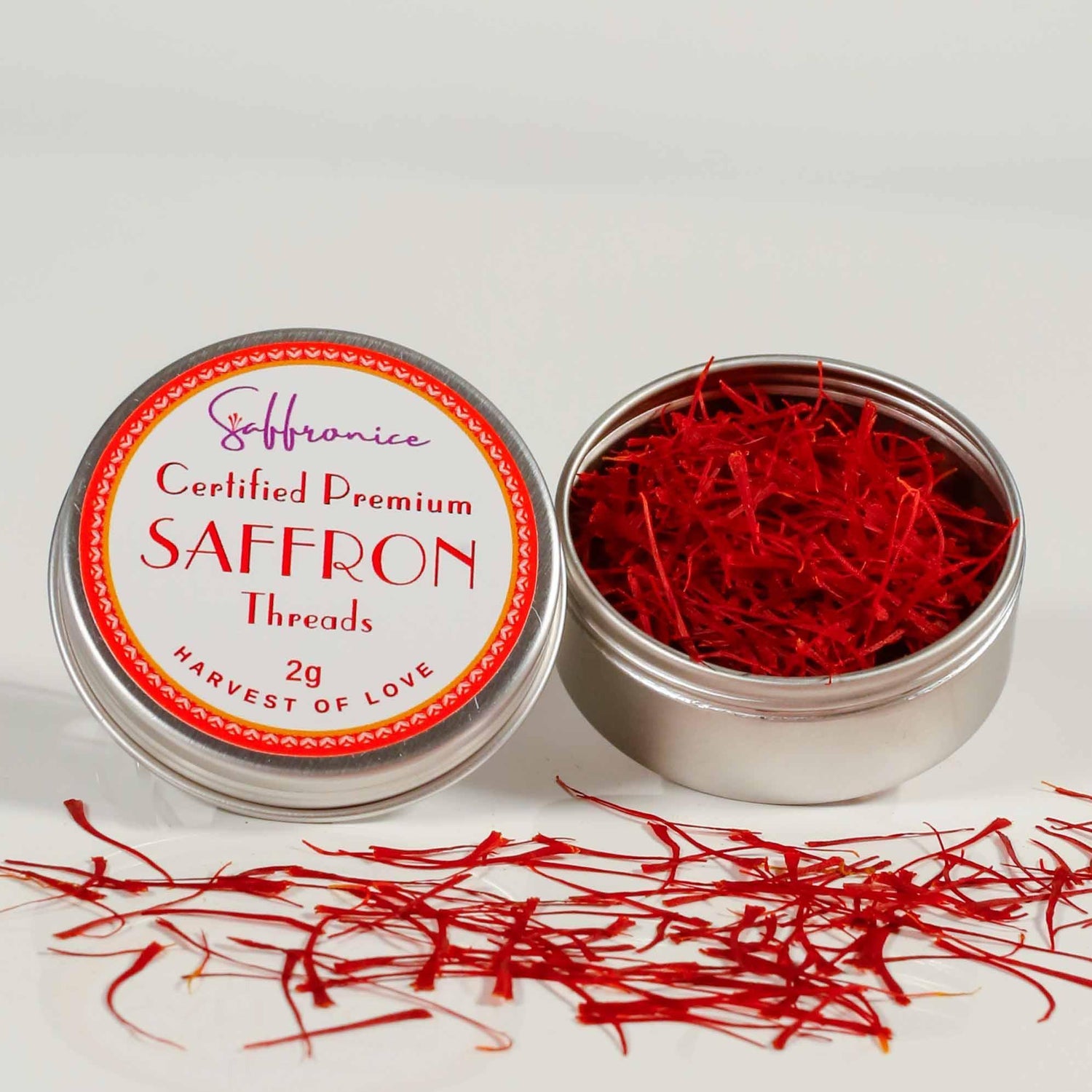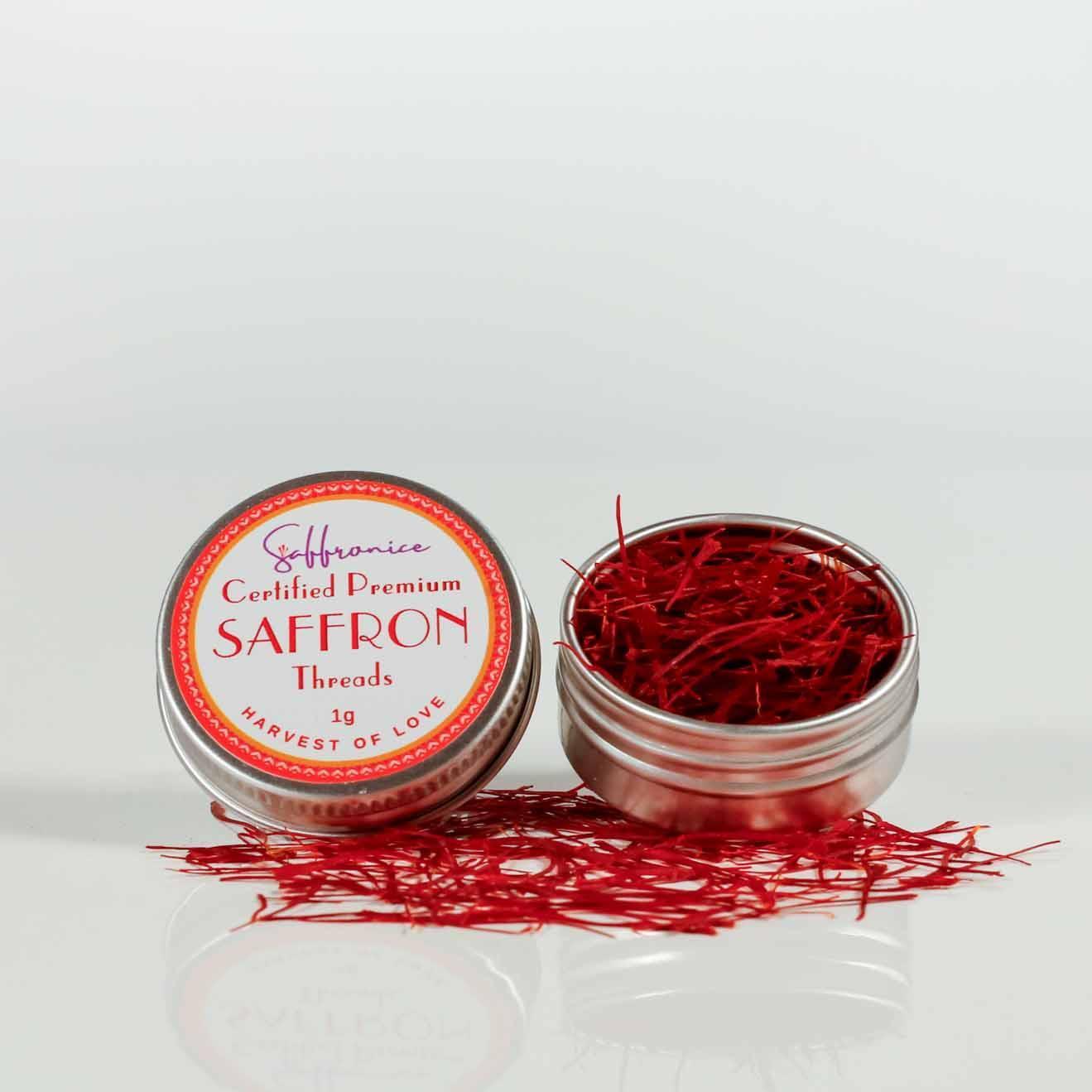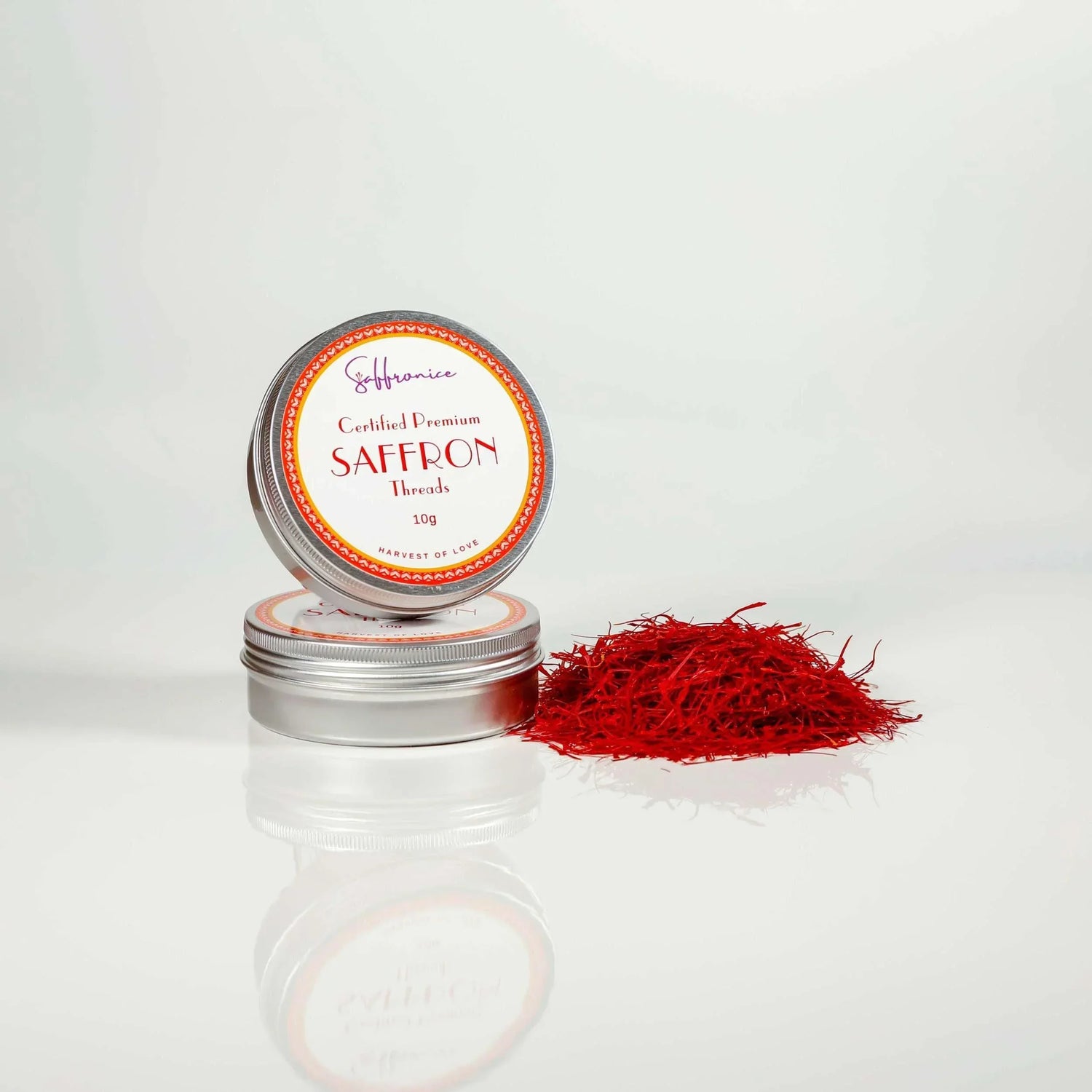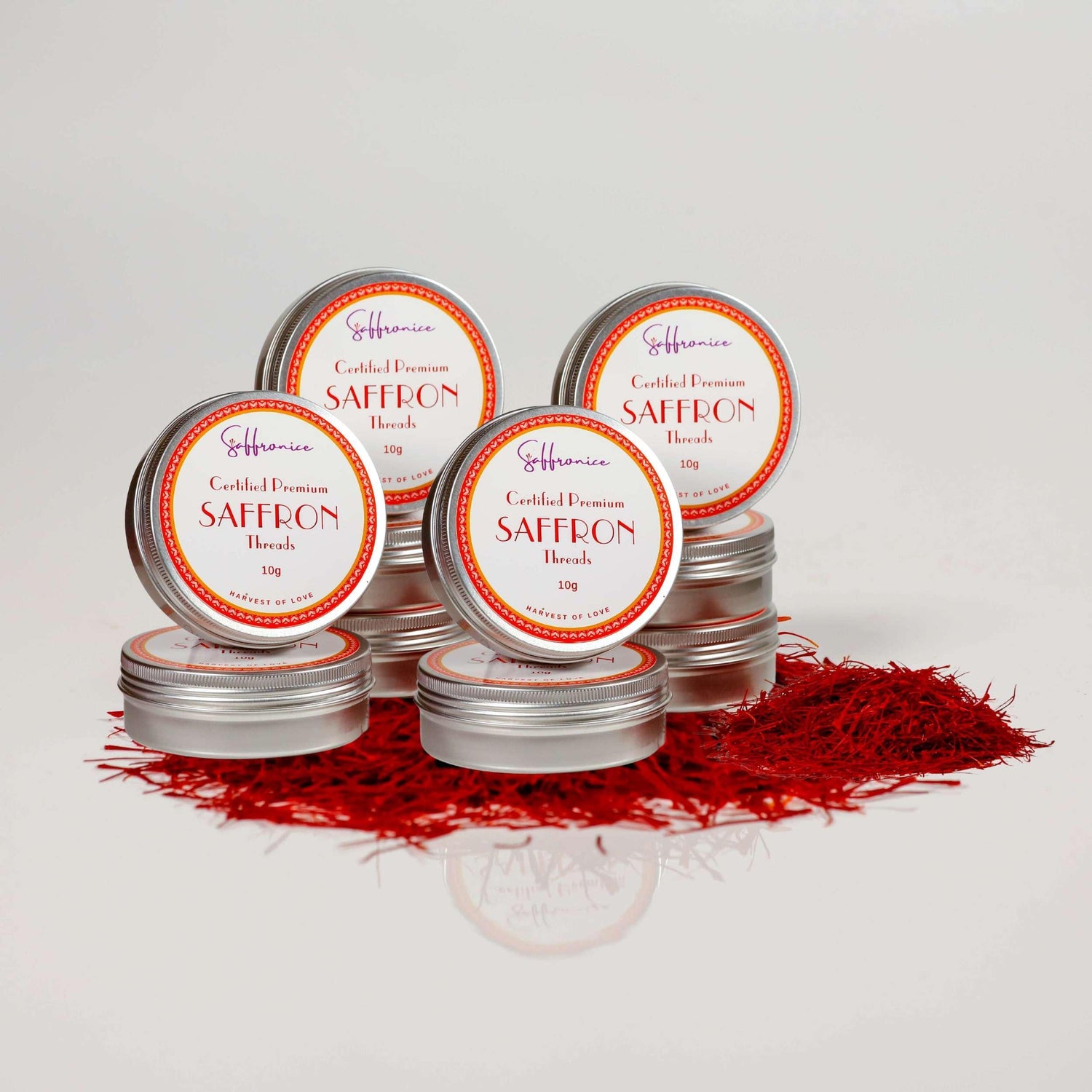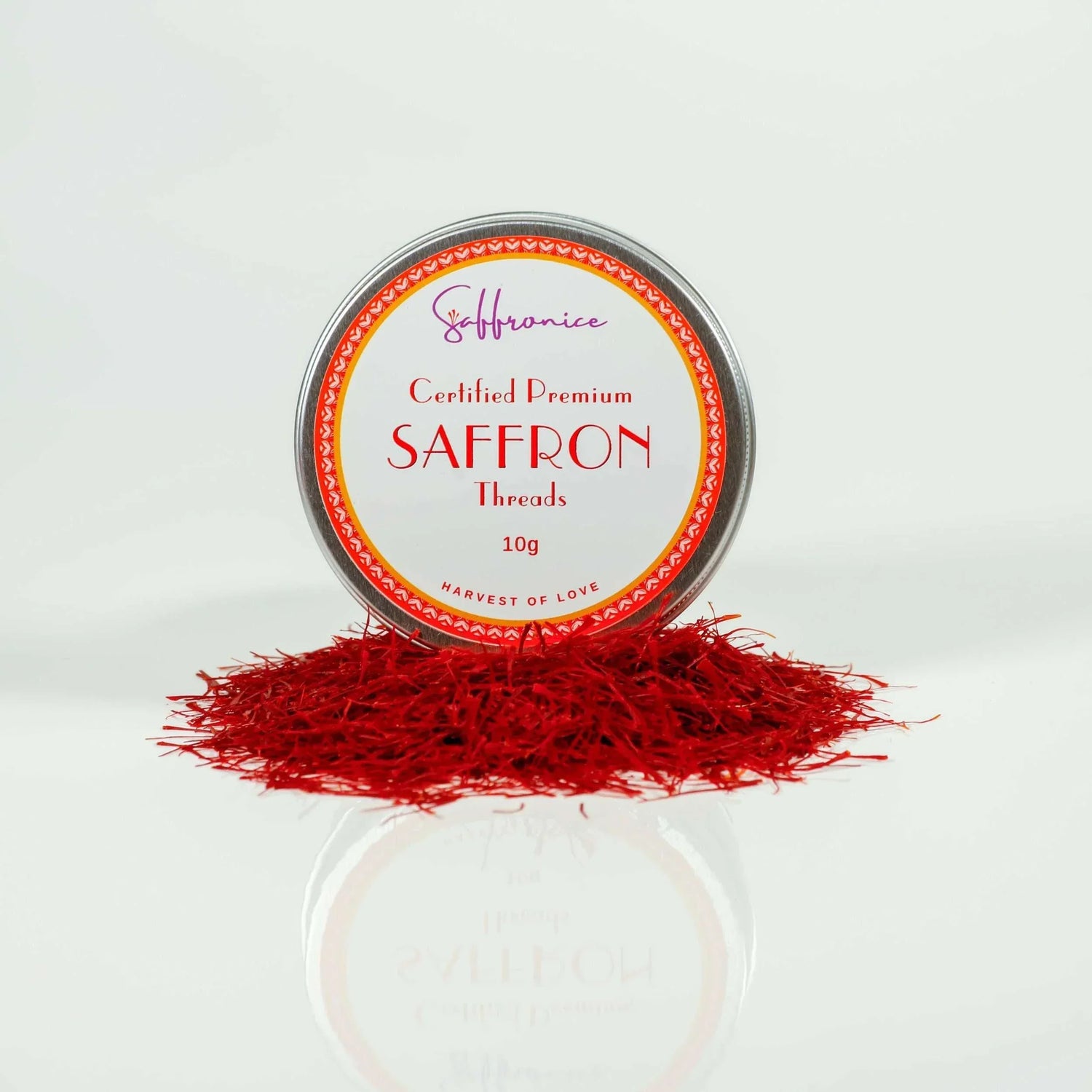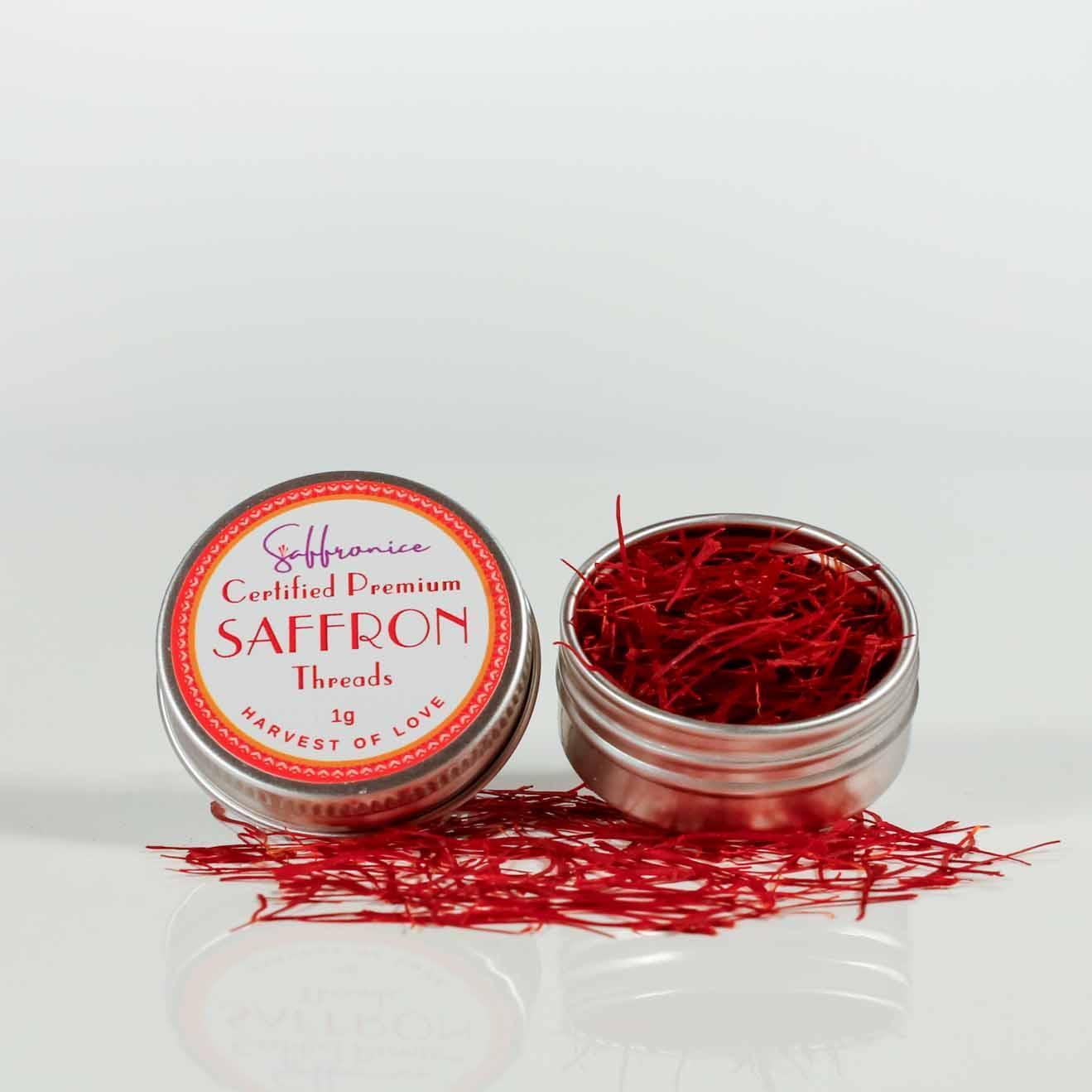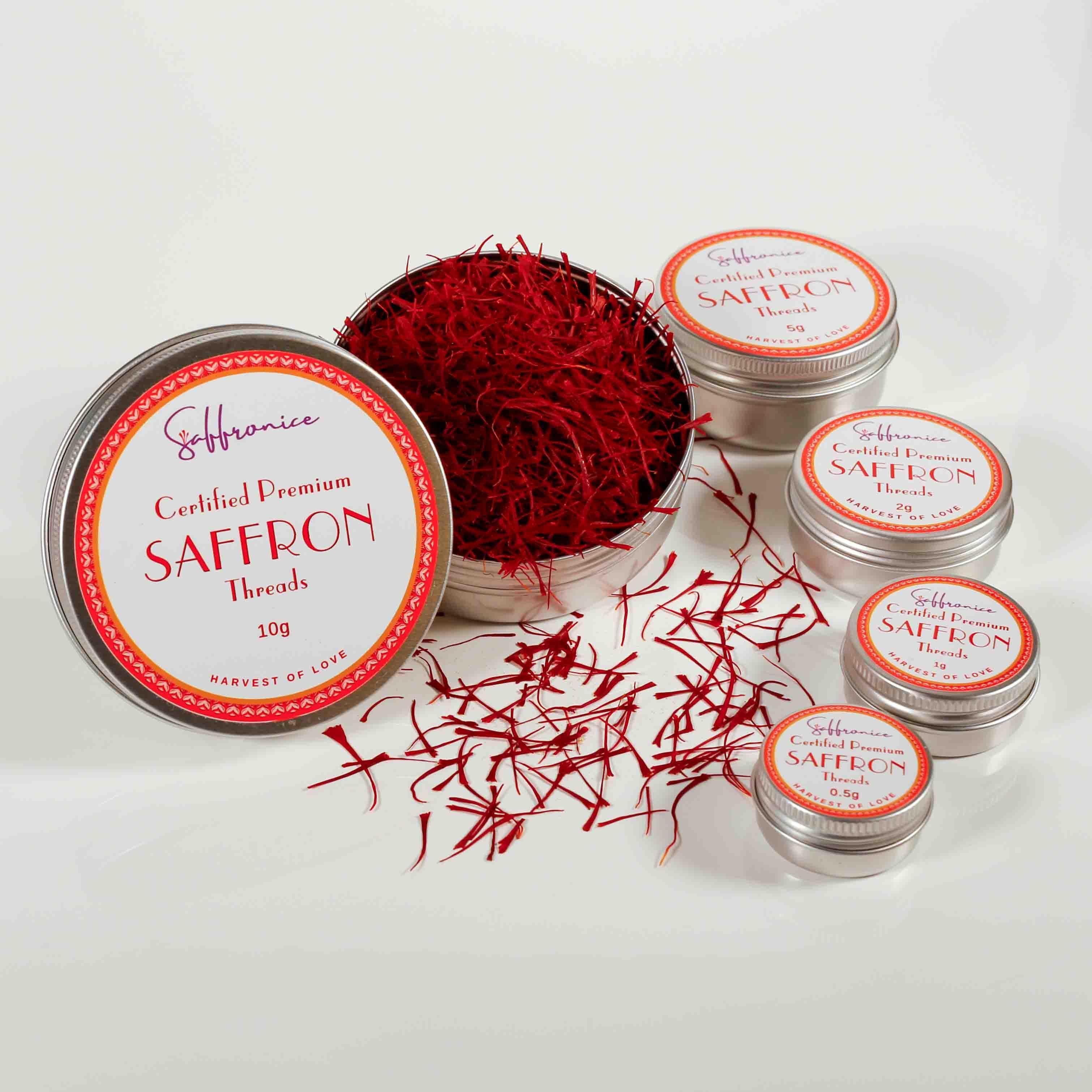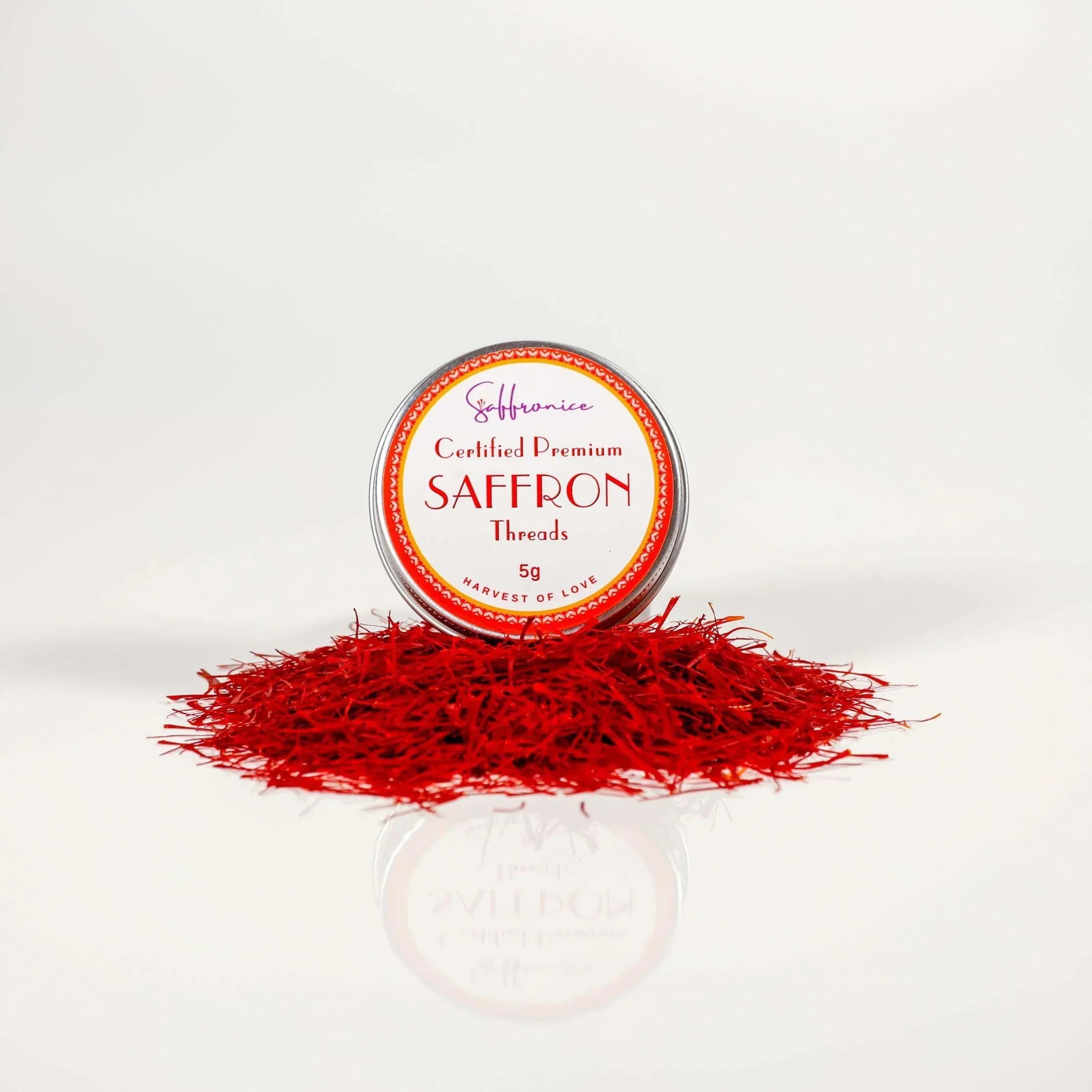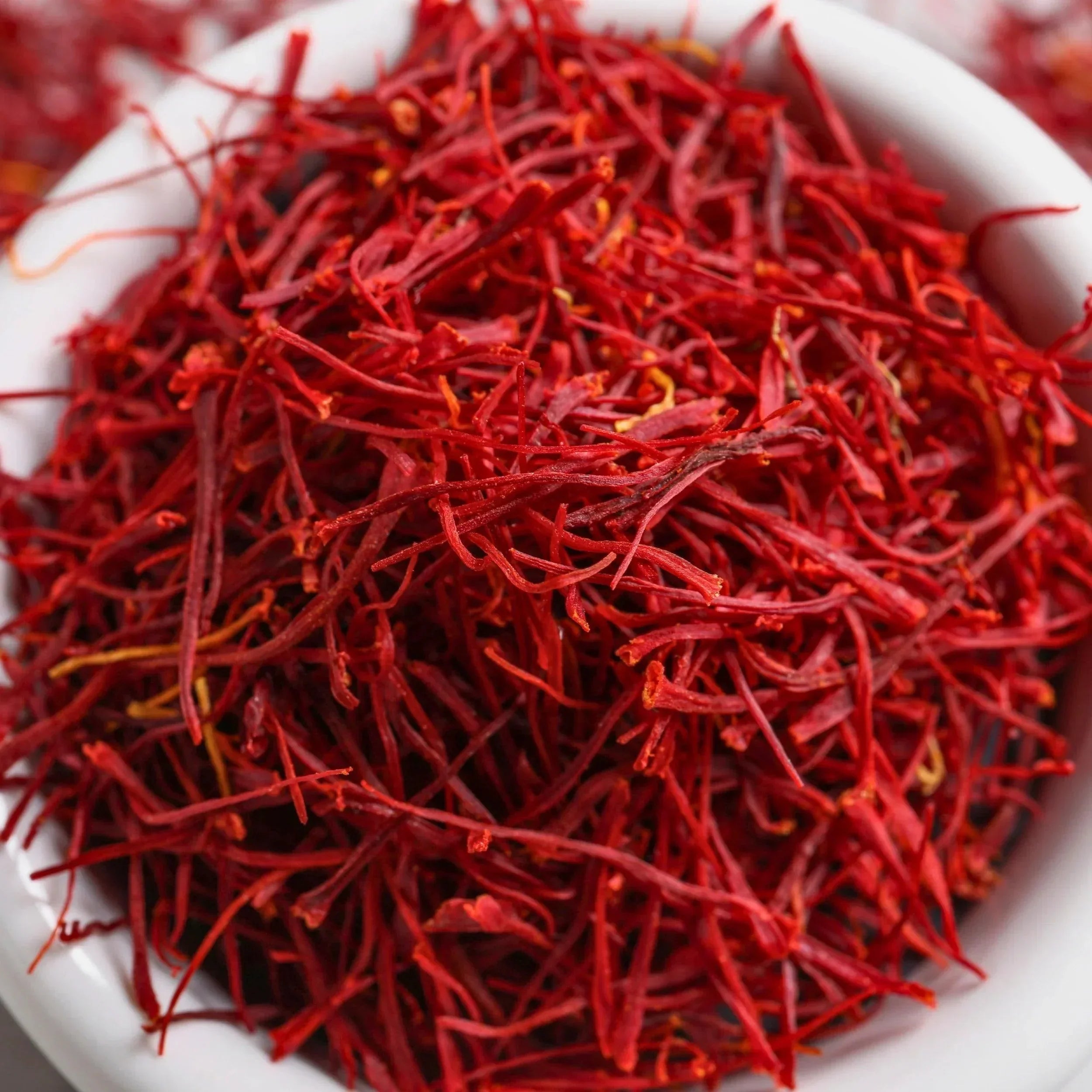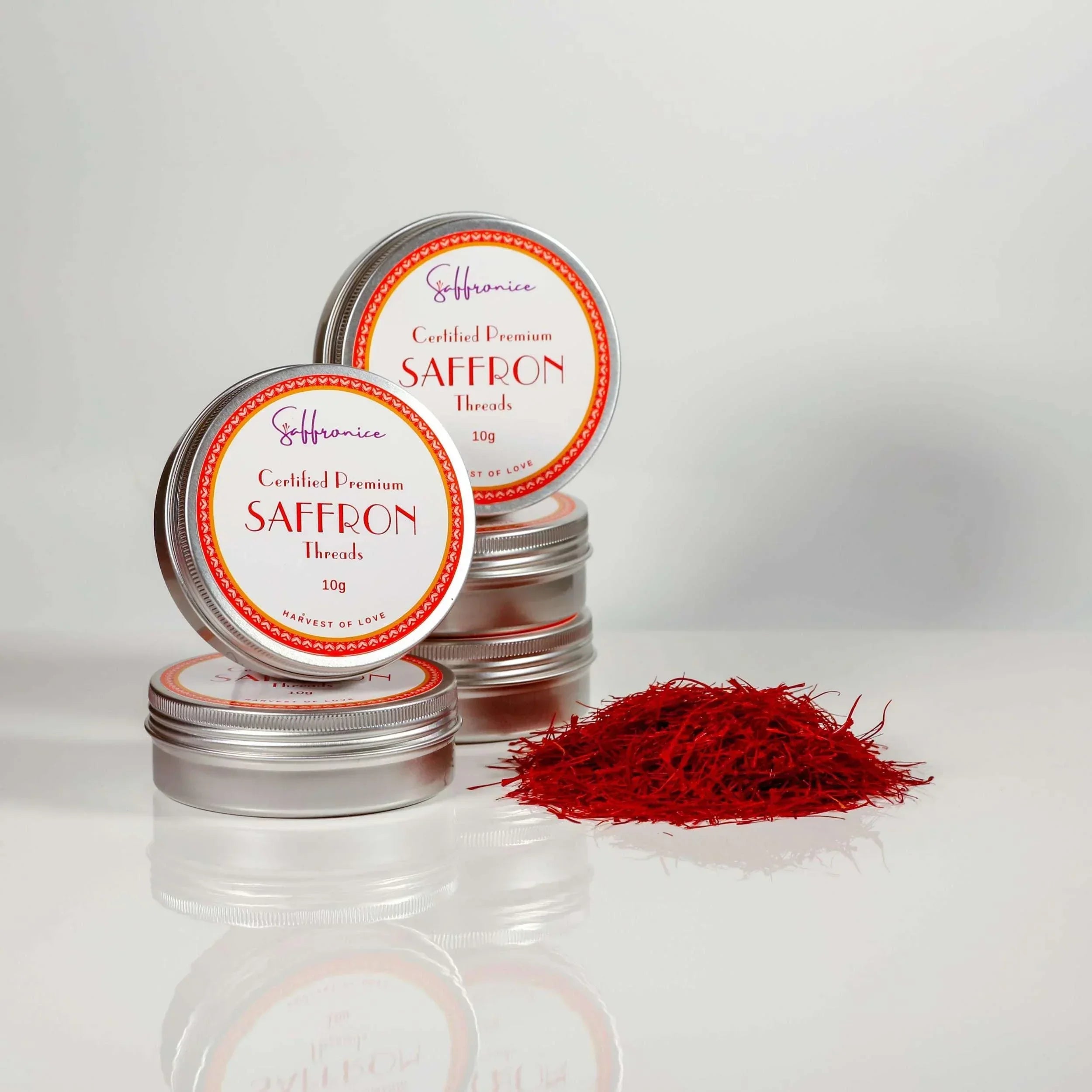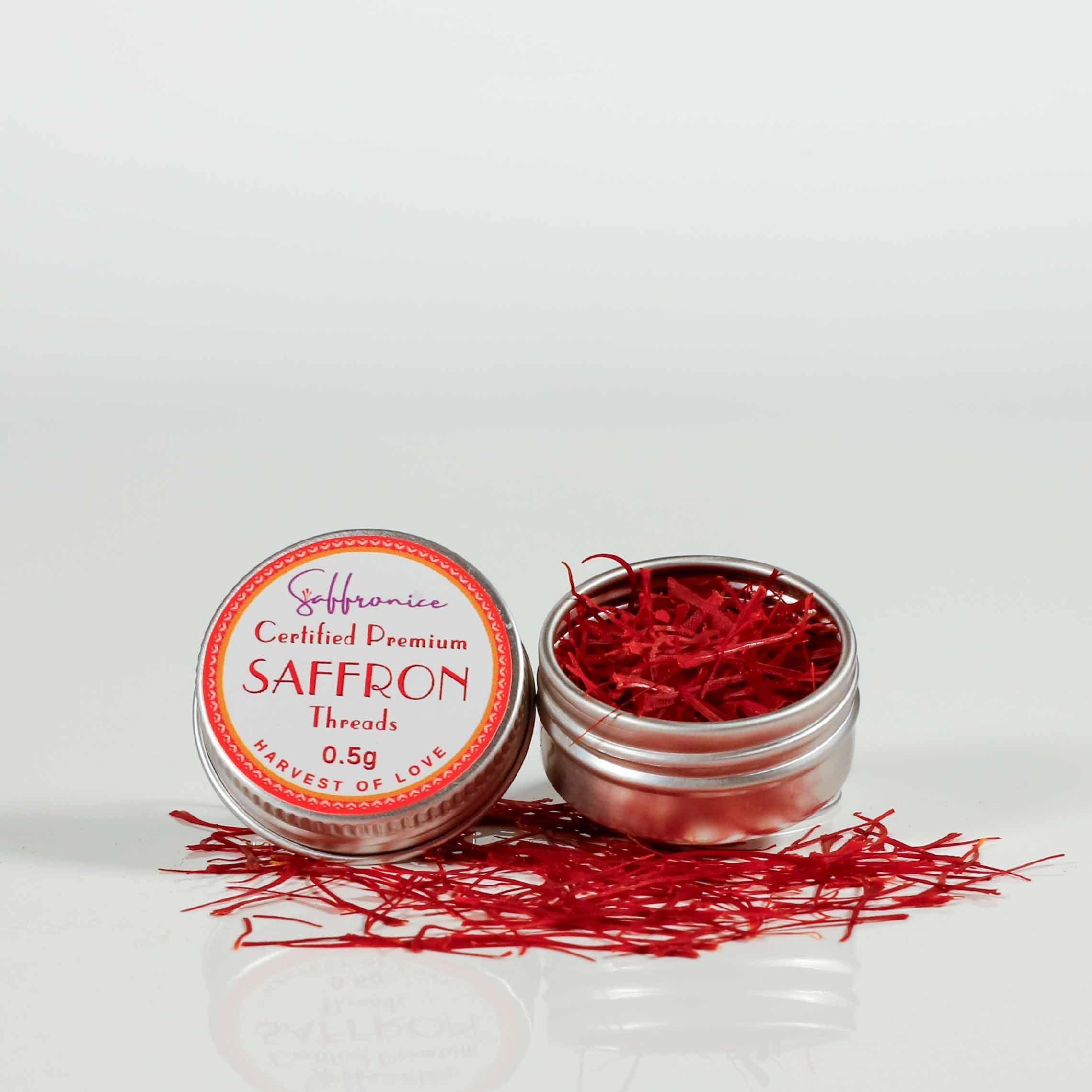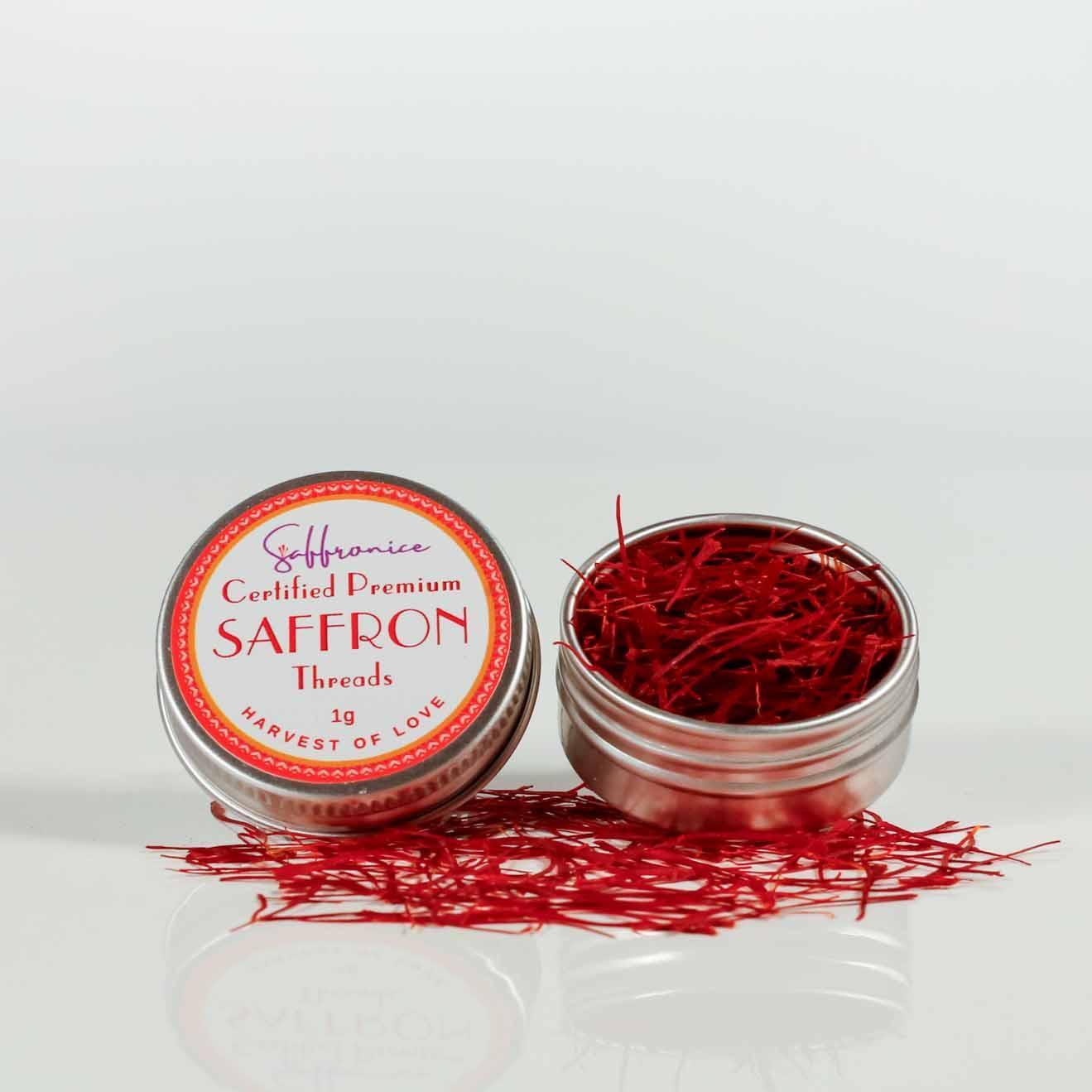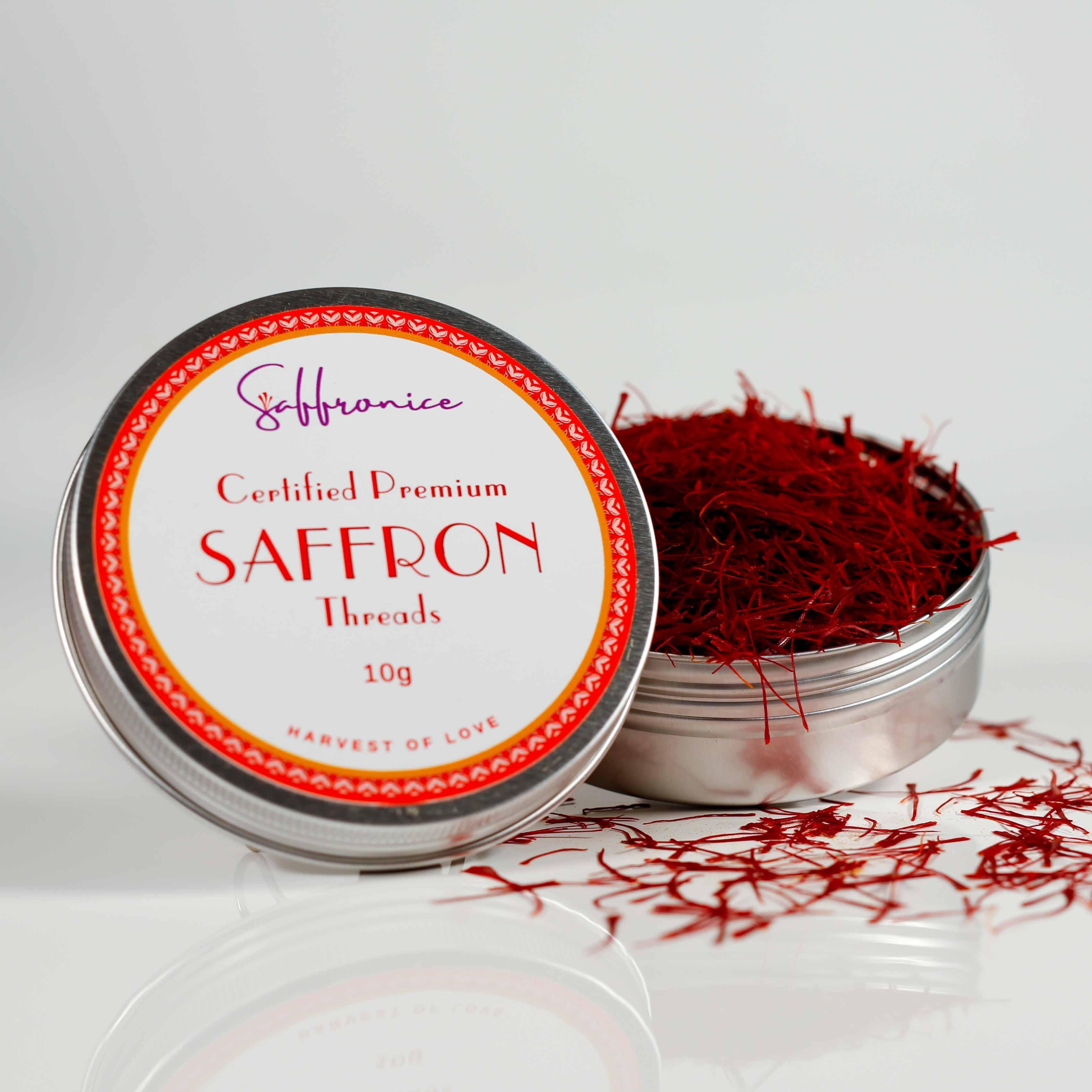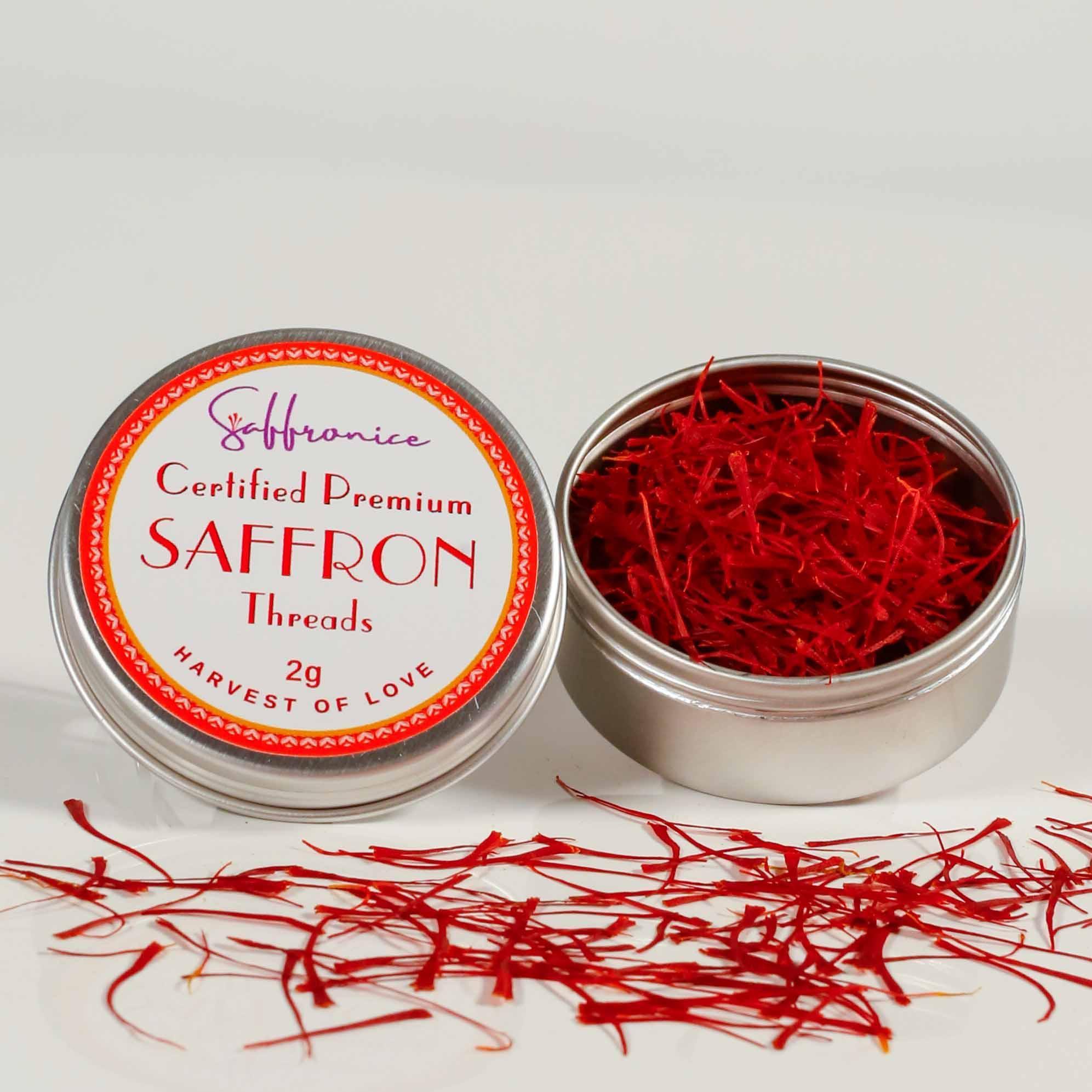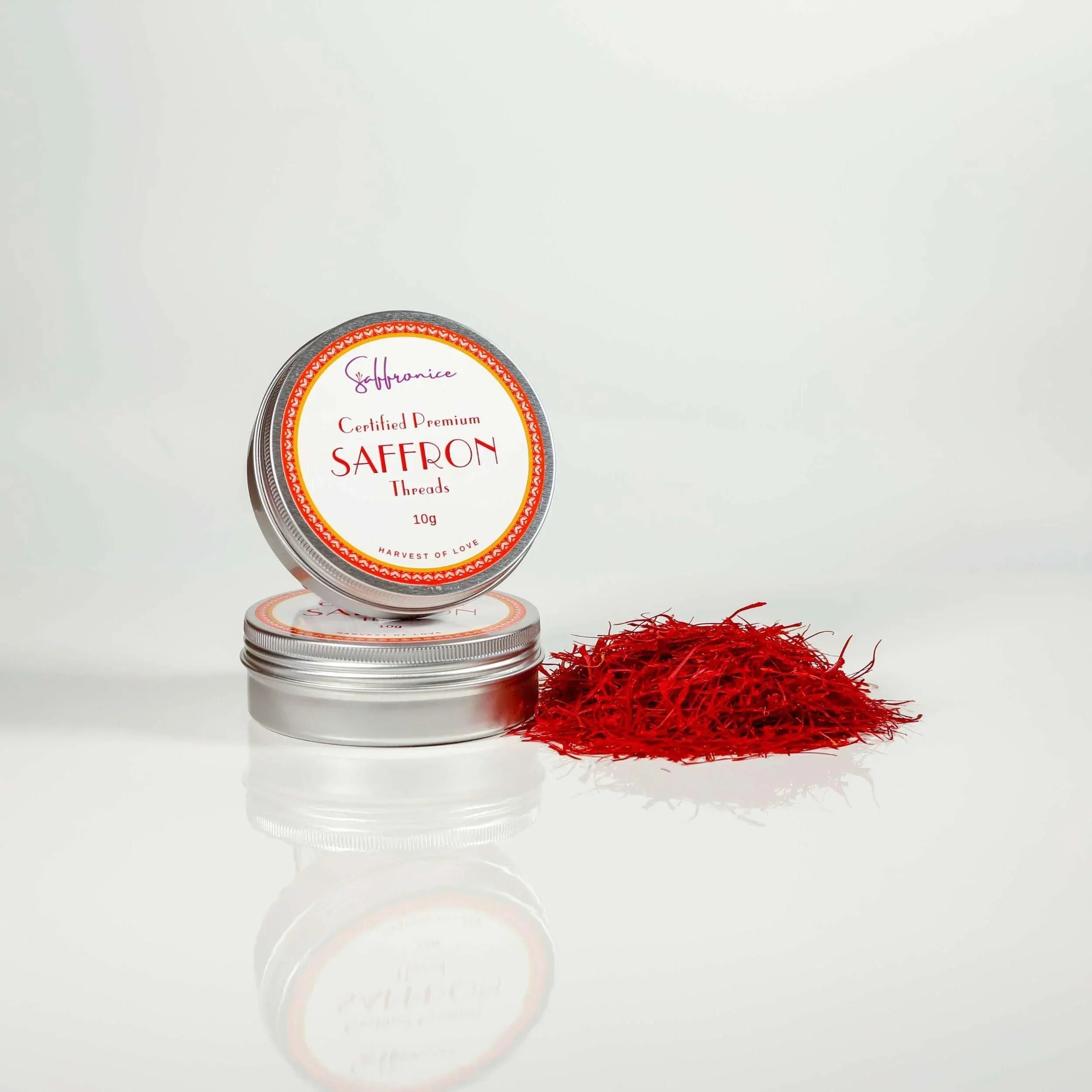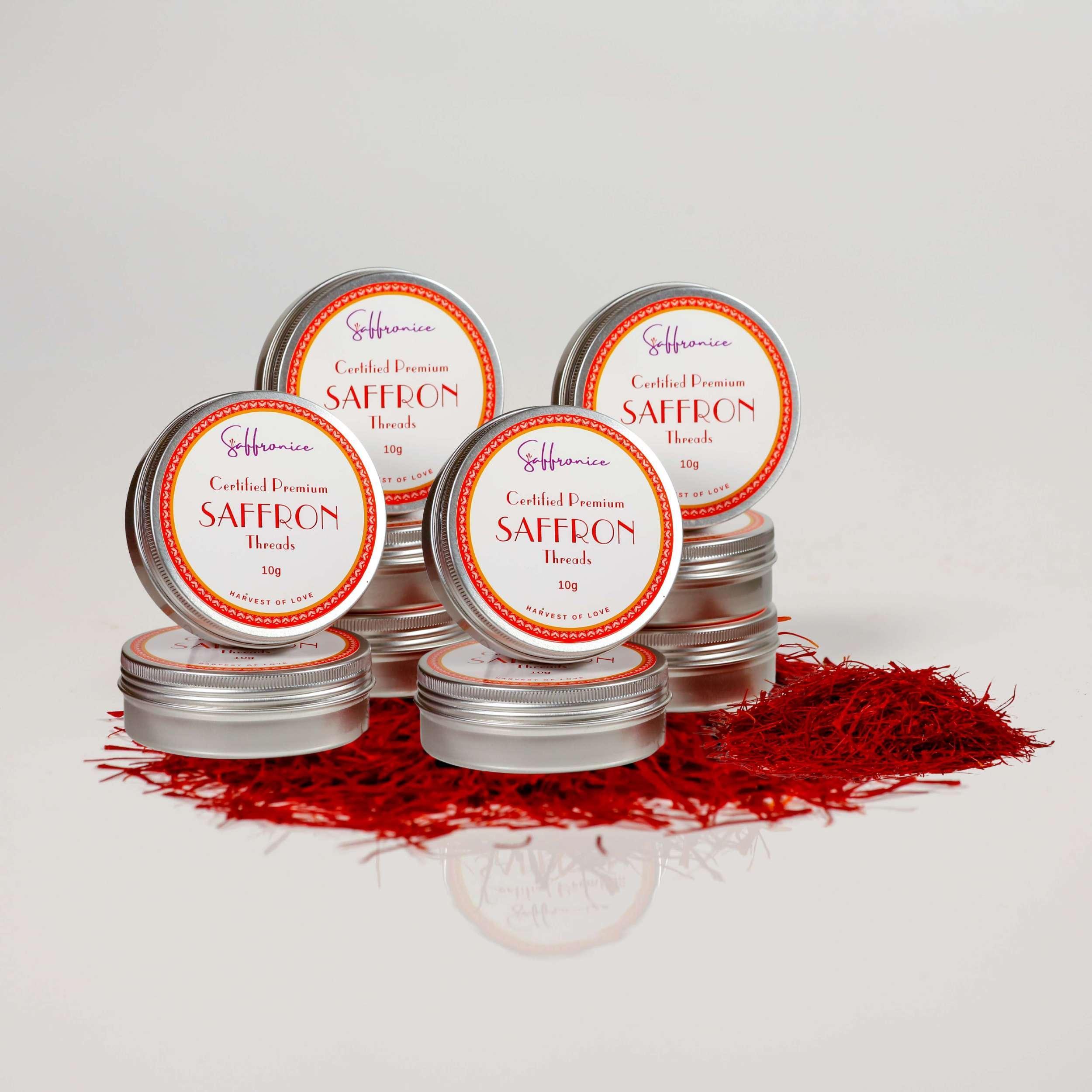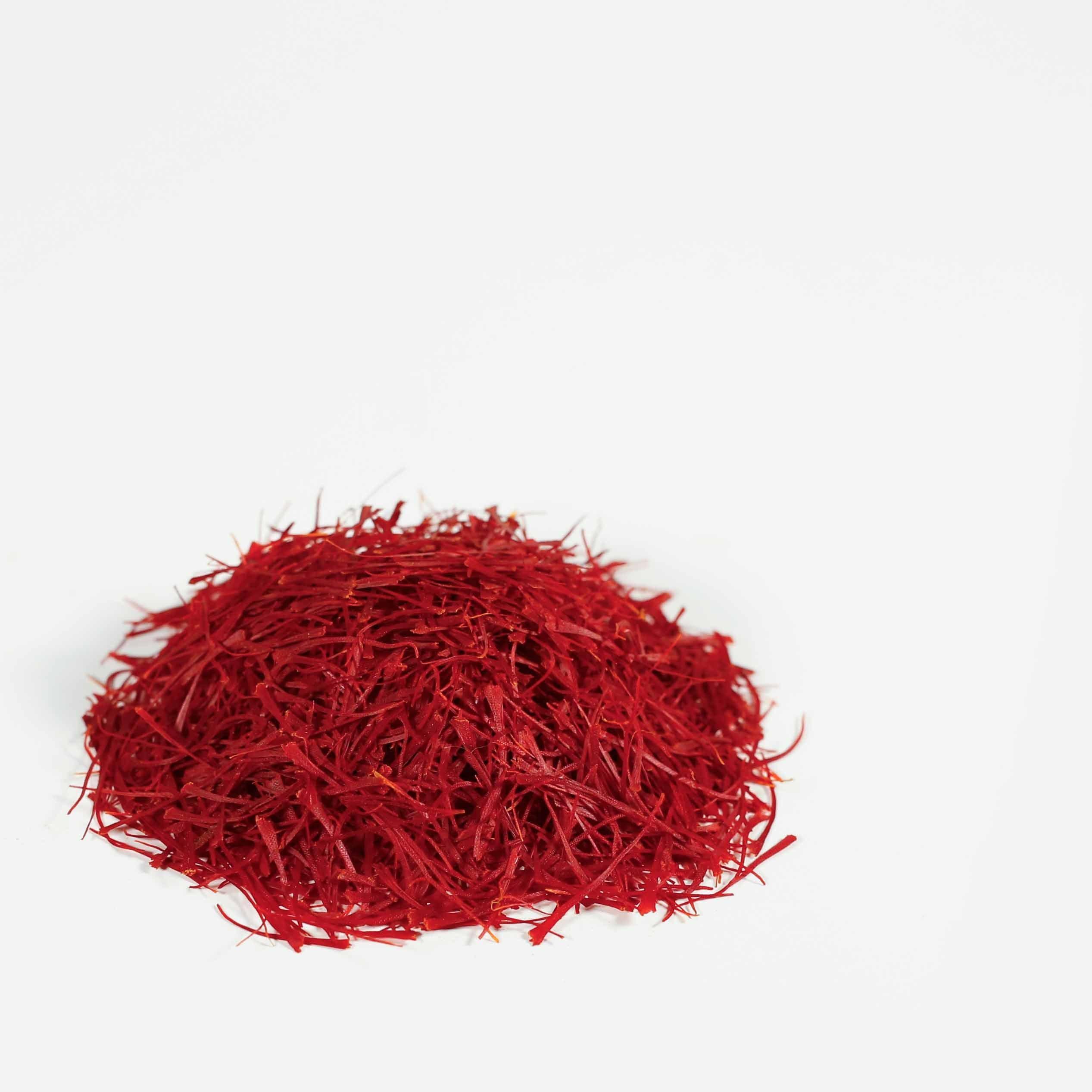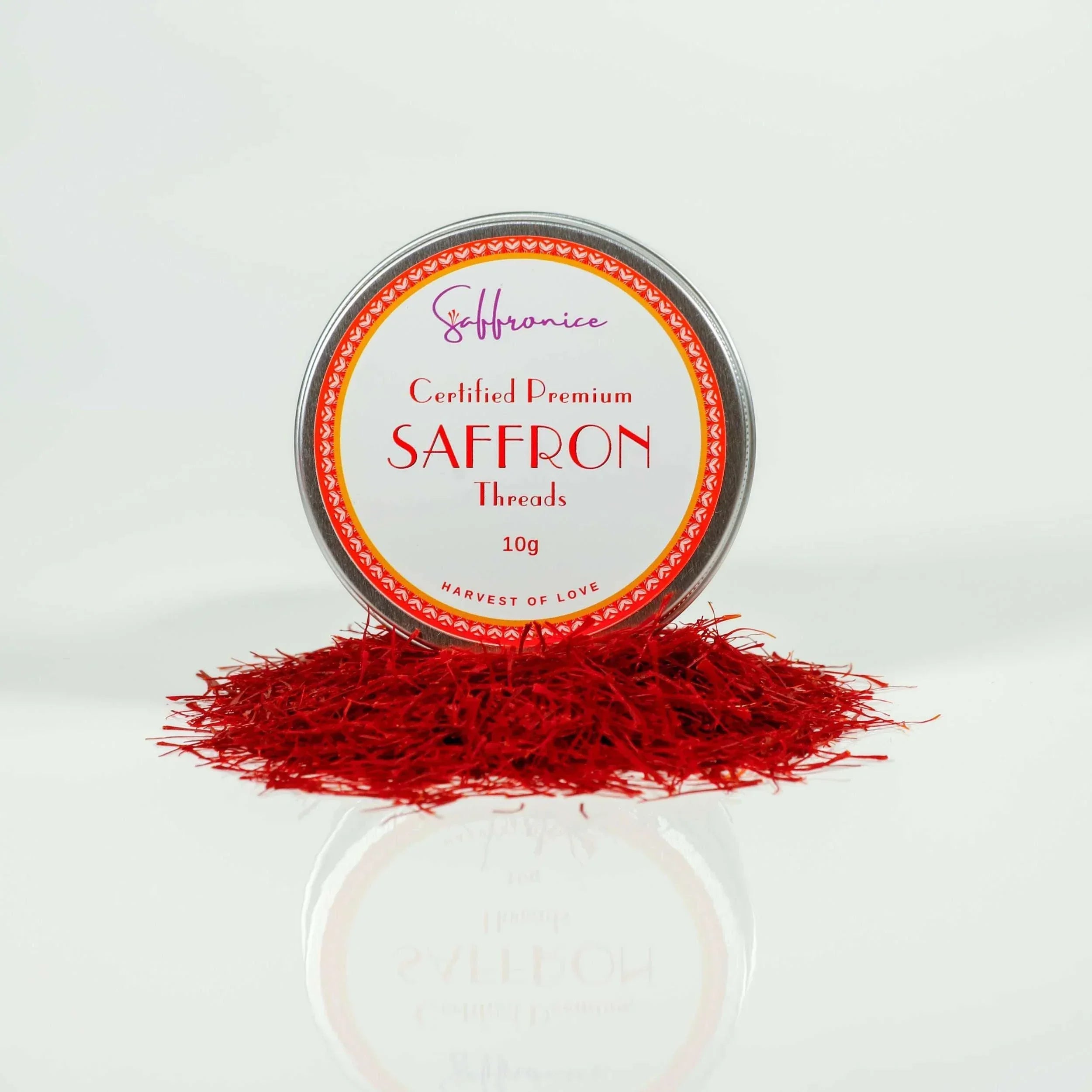When it comes to the world of spices, two names often spark intrigue for their rich histories and potent qualities - saffron and turmeric. These natural wonders have a special place in our kitchens and medicine cabinets alike, thanks to their vibrant colours, unique flavours, and numerous health benefits. But the question that often arises is - are saffron and turmeric the same?
The straightforward answer is no. Despite some similarities, these two spices differ vastly in terms of their origins, uses, health benefits, and culinary applications.
Saffron, often referred to as the “gold of spices,” is a precious commodity derived from the flower of Crocus Sativus. It's an integral part of various global cuisines and traditional medicines. Turmeric, on the other hand, is known for its vibrant yellow hue, comes from the root of the Curcuma Longa plant and boasts a myriad of health-promoting properties.

In this detailed guide, we'll explore:
- The history and origins of saffron and turmeric
- The different types of saffron and turmeric available in markets worldwide
- A comparison of their respective health benefits
- How these spices can enhance your dishes with their unique flavours
Whether you're a culinary enthusiast or someone looking for natural remedies for wellness, this article aims to be your comprehensive resource on everything related to saffron vs turmeric.
For those seeking an exquisite fusion of flavors along with the health benefits of both saffron and turmeric, consider trying out Saffronice's Turmeric Honey. This unique blend combines the goodness of turmeric, saffron, and galangal, making it an ideal addition to teas, meals, and breakfasts.
Additionally, if you wish to elevate your culinary creations with the luxurious touch of saffron, you can explore the range of Pure Saffron Powder offered by Saffronice. Handpicked and 100% natural, this saffron powder enhances your dishes with its exquisite aroma, flavor, and color. Conveniently packaged for your culinary needs, it's a must-have ingredient for any aspiring chef or seasoned cook.

Saffron: A Precious Spice with a Rich History
Understanding the background of saffron is essential to fully appreciate its esteemed status and diverse types. This luxurious spice, often worth more than its weight in gold, has a history steeped in tradition and cultural significance.
Saffron Quality Standards and Grading
To ensure consumers receive the best strands, saffron quality is meticulously graded. The International Organization for Standardization (ISO) 3632 sets the criteria for this grading, which includes:
The key characteristics of high-quality saffron are often divided into three primary categories: aroma, colour, and flavour. These factors play a significant role in determining the quality and grade of saffron. They also contribute to the sensory experience that makes saffron a sought-after ingredient in various culinary creations.
1. Aroma
The aroma of saffron is one of its defining characteristics. A quality saffron strand should possess a distinct scent that is:
- Sweet: The natural sweetness contributes to the overall aromatic profile of the spice.
- Floral: This characteristic is associated with fresh, top-grade saffron. It adds a layer of complexity to the aroma.
- Earthy: An earthy undertone is indicative of well-preserved and high-quality saffron.
2. Colour
Colour serves as a visual cue for assessing saffron quality. Here's what you should look for:
- Deep Crimson Tone: Saffron strands are expected to have a deep crimson tone. This hue signals a high concentration of crocin, the chemical compound responsible for saffron's colour.
- Uniformity: The colour should be consistent throughout each strand, without any faded or discoloured sections.
3. Flavor
Lastly, the flavour of saffron is an important aspect in determining its quality. A high-quality saffron offers:
- Sweet yet Slightly Bitter Taste: This unique balance between sweetness and bitterness characterizes authentic, premium-grade saffron.
- Complexity: The flavour should be rich and layered, enhancing the taste profile of any dish it's added to.
- By understanding these key features, you'll be able to make an informed decision when purchasing this precious spice and fully appreciate its luxurious qualities in your culinary creations.
The grading system classifies saffron into various grades, from the superior Negin (Grade 1) to Style (Grade 5). Each grade reflects differences in moisture content, foreign matter presence, and floral waste content.
Renowned Varieties of Saffron
Iranian Saffron
- Dominates over 97% of the global supply.
- Known for its high crocine levels, which contribute to intense color and robust flavor profiles.
Spanish Saffron
- Includes grades like Coupe (Class 1) and Mancha (Class 2).
- Despite declining production due to climate change, Spanish saffron remains sought after.
Indian Saffron
- Primarily cultivated in Kashmir, it has a cooler climate influence.
- It tends to have a milder flavour and colour than its Iranian counterpart.
Each variety brings its unique character to dishes around the world. For example, in Saffronice's Turmeric Honey, Iranian saffron is paired with turmeric and galangal, highlighting its adaptability beyond traditional uses.
Whether you're after Iranian saffron's vibrancy or Indian saffron's subtlety, understanding these distinctions helps you select just the right type for your culinary creations or healthful concoctions. The Turmeric Honey from Saffronice, made with a delightful fusion of Turmeric, Saffron, and Galangal, exemplifies the versatility of saffron beyond traditional uses. This Sunshine Coast raw honey blend brings a healthful and flavorful addition to teas, meals, and breakfasts.

Turmeric: More Than Just a Vibrant Yellow Spice
Turmeric, often recognized for its brilliant yellow hue, is more than just a colourant used in cooking. As a member of the Zingiberaceae family, it shares a botanical kinship with ginger and cardamom. This versatile herb has deep historical and cultural significance, especially in South India and Indonesia.
South Indian Cuisine:
1. Integral to Flavor and Color
In South India, turmeric is essential for both its vibrant color and earthy flavor. It’s a staple in curry powders and masalas, contributing to the signature golden tint of many regional dishes.
2. Ceremonial Significance
Beyond the kitchen, turmeric holds ceremonial importance in Hindu traditions. It's used in rituals and symbolises purity, prosperity, and fertility.
3. Ayurvedic Practices
Health-wise, turmeric plays a crucial role in Ayurveda — India's ancient system of medicine — where it’s praised for its anti-inflammatory and healing properties. But did you know that it shares some similarities with another member of the Zingiberaceae family called Kencur Ginger? This ginger variety from Southeast Asia also boasts medicinal properties and is frequently used in traditional Indonesian medicine.

Indonesian Cuisine:
1. A Spice for All Seasons
Indonesian cuisine celebrates turmeric in various ways throughout the year. From fragrant rice dishes like nasi kuning to the warming tonic jamu, which combines turmeric with other ingredients for health benefits.
2. Diverse Applications
Whether used in marinades or spice pastes known as bumbu, turmeric is an essential component that adds both colour and flavour to Indonesian culinary delights.
As we explore the world of spices, it becomes evident that turmeric is more than just an ordinary ingredient. Each region has its own unique traditions and practices, and this spice is deeply intertwined with cultural identity. In the following sections, we will discover what sets turmeric apart from saffron and why it holds significance in both culinary arts and wellness communities.
Exploring Their Respective Qualities and Benefits
Turmeric: A Powerful Spice with Many Health Benefits
Turmeric owes its health benefits to a compound called curcumin. This bioactive substance is a potent anti-inflammatory and antioxidant. Its potential in supporting brain health is being researched, with studies indicating that curcumin may increase levels of Brain-Derived Neurotrophic Factor (BDNF), a type of growth hormone that functions in the brain. This could be promising in delaying or even reversing many brain diseases and age-related decreases in brain function.
Turmeric for Digestion
Curcumin aids digestion by stimulating the gallbladder to produce bile, which can improve digestion and reduce symptoms of bloating and gas.
Turmeric for Inflammation
Chronic inflammation contributes to many common Western diseases. Curcumin can suppress many molecules known to play major roles in inflammation, making it a powerful anti-inflammatory spice.

Saffron: A Versatile Spice with Impressive Health Benefits
Shifting the focus to saffron, the revered spice is not just a culinary delight but also offers an array of health benefits. Saffron contains various plant-derived chemical compounds that are known to have antioxidant, disease preventing, and health promoting properties.
Saffron for Skin Health
Saffron's antioxidant properties make it suitable for skin care applications. It is believed to lighten the skin, reduce acne, and promote a healthy glow. Some studies suggest that saffron may also have sunscreen properties.
Saffron vs Turmeric for Skin: Which One Should You Choose?
In a comparison between saffron vs turmeric for skin, both spices offer unique benefits:
- Turmeric has been praised for its anti-inflammatory and antibacterial properties which can work wonders on condition-riddled skin. It can also help reduce redness from blemishes and calm skin conditions like eczema and rosacea.
- On the other hand, saffron's potential as an anti-fungal ingredient makes it effective for treating acne and blemishes.
While both spices are potent and beneficial in their own right, it's important to note that individual reactions can vary. It is advised to do a patch test before incorporating these spices into your skincare routine.

Distinguishing Flavors and Culinary Uses
When you're cooking with these vibrant spices, it's important to know the unique taste each one brings to a dish. Here's what you can expect:
Cooking with Turmeric
- Flavour: Warm, bitter, and peppery with a mild fragrance resembling orange and ginger.
- Culinary uses: Besides adding color, turmeric also adds an earthy base to curries, soups, and rice dishes.
Cooking with Saffron
- Flavor: Complex taste that's sweet yet slightly bitter, with floral and earthy undertones.
- Culinary uses: Due to its strong flavour, saffron should be used sparingly. Just a few threads can infuse an entire dish with its unique essence.
Flavor Balancing Tips
Here are some tips to help you balance the flavours when using these spices:
- To maximize saffron's aroma, steep it in hot water before adding it to your recipe.
- Turmeric’s potency can be mellowed by combining it with fats like coconut milk or oils and complementary spices such as cumin and coriander.
Recipes that Shine
Saffron Rice Recipe
- Gently crush a pinch of saffron threads in a small bowl.
- Add hot water to the saffron and let it steep for 10 minutes.
- In a saucepan, warm oil over medium heat before sautéing onions until translucent.
- Stir in your rice until well coated with oil and lightly toasted.
- Pour in chicken or vegetable broth along with the saffron infusion.
- Cover and simmer until the rice is tender and has absorbed the liquid.
The result is a beautiful golden-hued rice that's fragrant and subtly flavored by saffron – perfect as a side dish for meats or vegetables.
Turmeric-infused Dish
- Heat oil in a pan on medium heat; add mustard seeds until they start to pop.
- Stir in chopped onions, garlic, and grated fresh turmeric root (or powdered turmeric).
- Add vegetables of choice – bell peppers, zucchini, carrots – along with salt and pepper.
- Cook until veggies are tender-crisp.
- Serve hot as a vibrant side dish or cool as a refreshing salad base.
Each spice has its own unique characteristics that can elevate your dishes from ordinary to extraordinary. So go ahead, experiment with these flavors and let your taste buds travel the world!
Conclusion
Embrace the rich tapestry of flavours and health properties that saffron and turmeric offer. Each spice carries a unique heritage, imbuing dishes with not just taste but also a storied past. The difference between saffron and turmeric extends beyond their colour and origin; it's found in their distinct profiles that can elevate a meal from ordinary to exceptional.
- Saffron, with its delicate threads, offers a sweet, floral touch to recipes like paella and risotto.
- Turmeric brings an earthy punch to curries and health drinks, along with its celebrated benefits of turmeric and saffron for brain health and anti-inflammatory effects.
Venture into the world of these spices, experimenting in the kitchen while appreciating their potential to enhance well-being. Whether steeping saffron for a fragrant tea or adding a turmeric twist to smoothies, the possibilities are as limitless as your imagination.
Remember, mindful usage is key. It's not just about the flavour; it's about fostering an appreciation for natural ingredients that have graced tables for centuries. Delight in the culinary journey—and may your adventures with saffron and turmeric bring both zest to your palate and vitality to your life.

FAQs (Frequently Asked Questions)
What is the difference between saffron and turmeric?
Saffron and turmeric are two distinct spices with different origins, flavours, and uses. While saffron is derived from the flower of Crocus sativus, turmeric comes from the root of Curcuma longa, a plant in the ginger family.
What are the different grades of saffron?
Saffron is graded based on various factors such as colour, flavour, and aroma. The highest quality saffron is known as 'Sargol' or 'All Red', followed by 'Pushal' and 'Dasteh', which contain some yellow or orange threads.
Where does turmeric originate from?
Turmeric has its origins in South India and is also widely used in Indonesian cuisine. It has been cultivated for thousands of years and holds significant cultural and culinary importance in these regions.
What are the potential health benefits of turmeric?
Turmeric contains a compound called curcumin, which has been studied for its anti-inflammatory, antioxidant, and neuroprotective properties. It may also support digestive health and overall well-being.
How do saffron and turmeric differ in terms of culinary uses?
Saffron is often used to add a rich golden hue and subtle floral flavour to dishes, while turmeric brings a vibrant yellow colour and warm, earthy taste. Both spices have unique roles in enhancing the flavour profiles of various cuisines.
What are the key takeaways from comparing saffron and turmeric?
The comparison between saffron and turmeric highlights their distinct qualities, origins, uses, and potential health benefits. Embracing the diversity of these spices can enhance culinary experiences and contribute to overall well-being when used mindfully.
Enjoy Learning About Saffron? Read other interesting saffron basic information and increase your knowledge.



